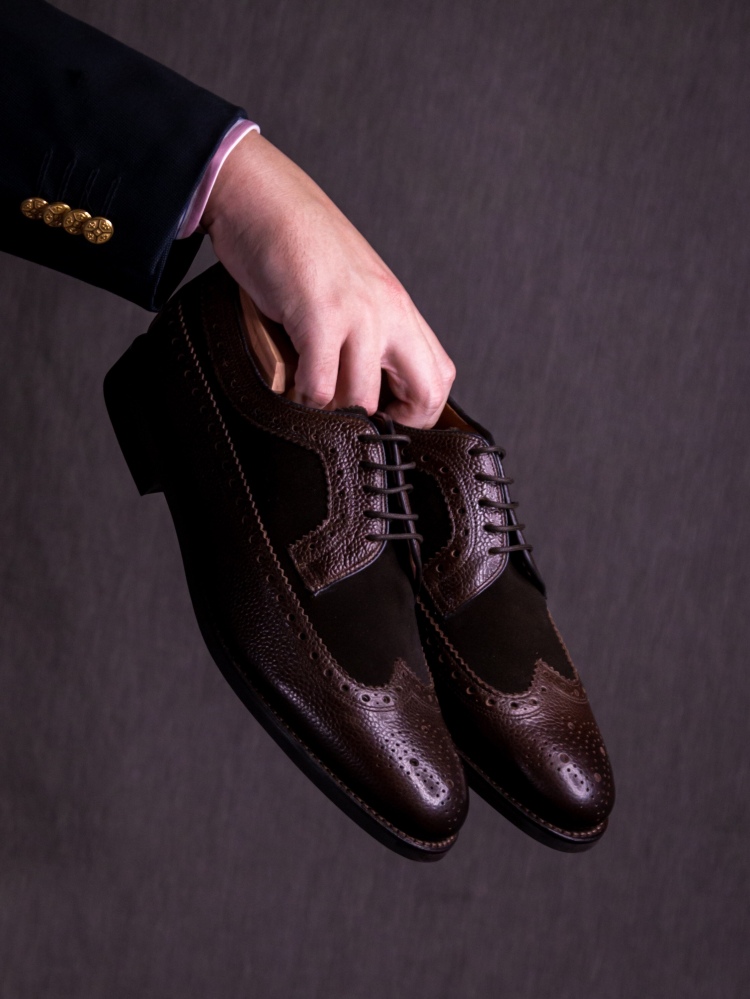Coming into cooler and wetter weather, sturdy rubber soled shoes are a consideration.
There are several notable styles of rubber shoe sole, including commando soles, wedge soles, crepe soles and the subject of this article: Dainite.
Easily recognisable by its studded appearance, a Dainite sole is often found on good quality goodyear welted shoes and boots.
They’re popular for good reason, with many pros to having Dainite soles.
Dainite soles are sturdy, hardwearing and quite slip-resistant.
However, they’re not perfect for every occasion, so there are some considerations to be made before choosing a Dainite sole for your next shoe purchase (or resoling job).
I own two pairs of shoes with Dainite soles.
The most regularly worn is a Charles Tyrwhitt number from last year, chocolate brown brogue derbies in pebble grain leather and suede.
They’re built like tanks, perfect for winter.

The other is a pair of black Cheaney cap toe oxfords.

Focussing on the soles, from new they showed almost no sign of wear after a season of use.
That’s a good sign of the sturdiness and hardwearing nature of the construction.
I felt like I could quite literally put these through hell and back, and they wouldn’t come back with so much as a scratch.
They did fairly well in wet weather, too, with the grip being adequate for city surfaces.
The design of Dainite soles makes them easy to keep clean, as mud and muck struggle to stick to them in the way that they stick to other types of rubber sole.
This design also allows a more elegant and refined look than a heftier tread like those on commando soles.
A Dainite sole doesn’t look at odds with a dress shoe.
I did notice some slippage, though, and the grip level wasn’t as good as could be expected from a more grip-oriented sole like a commando or those found on Doc Martens.
Another concern I’ve noted with Dainite is comfort over long walking distances.
It’s not there.
The thickness and sturdiness might be good for economising your resole frequency, but it makes for a faster occurrence of sore feet than other rubber soles I’ve experienced.
If you’re looking for a good middle of the road sole, that can be bought and used without any further adjustment, I think Dainite is a great option.
However, if you have comfort issues, you may prefer a leather sole with a Topy applied.
I find those sufficient for light urban use, and I can walk further in them.
They’re nowhere near as sturdy as Dainite, require application by a cobbler and require more frequent maintenance, but I don’t subject my shoes to hard enough use to worry about it.
This is how I ended up buying the Brooke service boot from Thomas George Collection, rather than their more popular Turon model.
If I need shoes to punish, I’ll steer towards a commando sole for the comfort.
However, I still find a place in my own shoe wardrobe for Dainite.
It’s the the dependable, reliable option that causes minimal fuss.
Equal parts refined and rugged, and lasts for ever.
An attractive, economical middle ground option.
One thought on “The pros and cons of Dainite shoe soles”